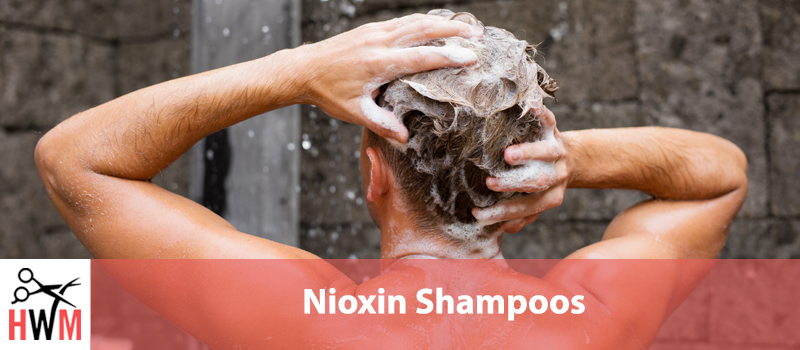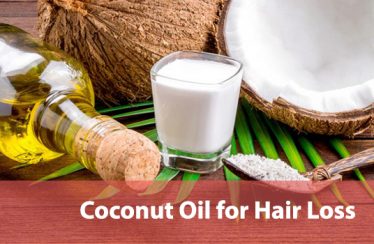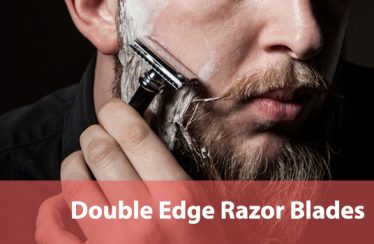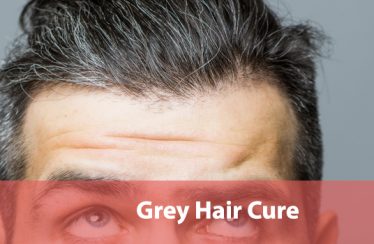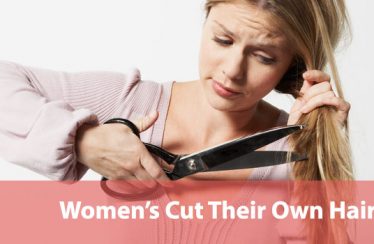If you suffer from hair thinning or hair loss you’ve probably done some research looking for effective products to protect and grow new hair.
A shampoo that claims to help grow hair sounds pretty good, right? Well, we’re looking at one of the top shampoos on the market for hair loss. We’ll discuss how it works, what you can expect when you give it a try, how it works, the ingredients, and the pros and cons of the product line.
We’ll also cover some of the additional support products that help with hair growth. Nioxin also offers styling products that will make your hair look thicker and fuller in the meantime.
What Is Nioxin Shampoo
Nioxin is a haircare brand that specializes in products to reverse hair loss and improve the appearance and body of thinning hair.
The brand is well-known for high-quality products. They offer a range of products from a minoxidil treatment that can be compared to Rogaine and its generics, to shampoos and styling aids that both work to disguise the appearance of thin hair and provide the building blocks of healthy hair growth.
However, their treatment systems tend to combine a long list of ingredients, several of which are prone to causing reactions in users with sensitive skin.
You should also know that while their products do tend to be well rated, only the minoxidil treatment is FDA approved as an effective treatment for hair loss.
As a bonus, their products are formulated to be safe for both men and women, with only a couple exceptions that are noted on the product, so you don’t have to worry about keeping separate hair care products on hand.
We’ll discuss the main product lines in this section and then look at how their products work and the pros and cons of the line as a whole.
The Different Systems
The main hair care line from Nioxin are their treatment systems. The systems are designed to work together to create more benefits for your hair and scalp than any one product on its own. They also work better together than mixing and matching products from multiple lines.
Each system kit has 3 different products. You can use them in combination with the other support products offered by Nioxin, although you should consult with a stylist, dermatologist, or doctor before you combine Nioxin products with other hair treatment lines.
There are a few different ways to determine which system kit will work best for you.
The simplest and likely easiest, way to pick out a system is to go to their website and use their Consultation Tool. The consultation tool asks a couple of quick questions to assess your hair and. matches you with one of their 6 kits. It will also give you an explanation of why they matched you with that particular kit, and recommendations for the support products that will best fit your hair.
You can also look for a Nioxin Salon in your area, where a professional stylist can assess your hair and make recommendations from there.
The systems target a few key areas of your hair. The extent of your thinning hair, whether it’s mild or more progressed, whether you’ve colored your hair, and the features of your hair you like, are all taken into consideration.
It’s important, whether you go with the Consultation Tool or a stylist, to be realistic both with the condition your hair is in now and with the results you expect. Especially if you are assessing your own hair, be honest. The formula is different if your hair loss has progressed or if it’s just starting.
Support Products
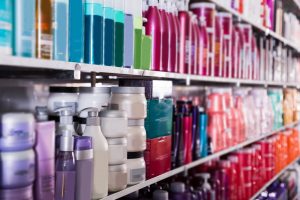
Nioxin also offers a range of support products in addition to the shampoo and conditioning systems. The Hair Regrowth System for advanced hair loss is a minoxidil product (like Rogaine), which they offer in both the standard 2% and 5% formulations.
They also offer a scalp cleanser and conditioner designed specifically for advantage hair loss that is a companion product for the Hair Regrowth System.
They also offer a supplement, the recharging complex. It’s a little different, not your standard Hair Skin and Nails supplement or multivitamin. The main three components are Biotin, Zinc, and Iron. Biotin is important for hair and skin health, while zinc has shown some promise as a supportive vitamin for hair growth and fighting hair thinning.
Iron can help with overall health, especially if you are anemic, as well as supporting your circulatory system.
Several leave-in-treatments target specific problems to boost your hair growth even more than the shampoo and conditioner systems by themselves.
Styling Products
Their range of styling products helps with all aspects of thinning hair styling.
Perhaps the most useful and protective of the styling products is the heat-protecting spray, which will let you continue blowing out and otherwise heat styling your hair without causing as much damage.
Since breakage is one of the most common causes of apparent hair loss and can make even the thickest most vibrant hair appear thin and droopy, protecting your hair against damage and breakage is one of the most important steps you can take to keep your hair looking and feeling good.
They also offer a thickening gel and a thickening spray, both of which will help disguise the look of thinning hair, giving your hair more width and volume.
The definition crème will also help add some volume to your hair while controlling frizz and adding a healthy shine that will help improve the overall appearance of your hair.
There are quite a few other products in their lineup, all of which are designed to help protect your hair and boost your confidence in your overall appearance, with or without hair loss.
How it Works
Of course, there has to be a method to the madness. While we can’t cover all the ingredients in every product in the Nioxin hair care line, or even in their shampoos and treatment systems, we can cover some of the basics of what each product works to do.
We’ll also talk about some of the most important ingredients included in their shampoos and hair products.
Reduce DHT
DHT, or dihydrotestosterone, is one of the most important androgen’s when it comes to hair loss, is present in both men and women. Some testosterone is naturally turned into DHT, and the amount can increase as you age.
DHT is important for growing facial hair and serves an important role in many other body processes, but it can wreak havoc on your scalp.
Although the mechanism for the damage is not very well known, we do know that an excess of DHT in your scalp damages your hair follicles over time, contributing to hair follicle miniaturization. As your hair follicles shrink, so does the hair that follicle produces. If the follicle shrinks too much, it won’t produce hair at all.
Nioxin has a blend of herbs and other ingredients specifically designed to target DHT, in addition to the other main causes of hair thinning and poor scalp health.
One of the main ingredients in Nioxin products is stinging nettle extract, it’s listed by its scientific name, urtica dioica extract. Stinging nettle has some scientific support for preventing the conversion of testosterone into DHT. So, it may decrease the concentrations of DHT near your scalp used topically.
However, the exact effectiveness is unknown. It depends quite a bit on the level of absorption into your scalp, and how the stinging nettle extract is processed by your body.
If you have sensitive skin, it’s important to consider that stinging nettle, and several of the other botanical extracts in Nioxin products can be irritating. Monitor your skin reaction, both on your scalp and any other skin your hair touches, and if you notice redness, rashes, or any other skin reactions consult a doctor.
Saw Palmetto, which can also be purchased as an over the counter supplement, is also included. Taken internally it can help balance androgen levels, although the science is not clear whether it will do the same as a topical application.
Reduce Inflammation
Inflammation is another big factor in the overall health of your scalp and can make a bad situation worse when it comes to hair loss.
Your hair follicles are dependent on a small and very delicate connection to your circulatory system, and too much inflammation can interfere with getting a good supply of nutrients and oxygen to your scalp.
Inflammation can also damage your hair as it grows, making it more prone to breakage and more sensitive to damage.
If your scalp is too inflamed it will also interfere with flushing the area. DHT and other potentially harmful compounds can build up in and on your scalp when your blood isn’t picking them up to be filtered.
Since DHT causes more damage the longer it’s present, the inflammation leads to progressive damage from DHT, free radicals, and other internal buildup.
Stinging nettle can also help with inflammation, but it’s far from the only ingredient added to Nioxin to help control scalp inflammation. They also include menthol in many of their products, as well as two different forms of mint extract.
Since mint can also help reduce DHT levels, although less so than either stinging nettle and saw palmetto, this is a winning combination.
Increase Circulation
Mint, menthol, and even just the massaging motion you use to work shampoo through your hair can all work to increase scalp circulation.
Circulation is a critical step in maintaining the health of your skin. As we already mentioned, the connection between your hair follicle and your circulatory system is incredibly small. It’s easy to damage or disrupt, and your hair follicles shrink rapidly without enough circulation.
Once follicle miniaturization is advanced the damage can’t be undone. Improving circulation early can make a huge difference in your results.
You’re probably okay if you’re in the first few months, or the first year of hair loss. The longer you wait to start treating hair loss, which almost always involves disconnection from the dermal papilla, the tiny blood vessels that connect to the bottom of your hair follicles, the more likely the damage is to be permanent.
In addition to the mint and nettle extracts, sodium citrate, another common ingredient, is a mild anti-coagulant that can increase blood flow in your scalp. The effectiveness of sodium citrate, like stinging nettle, depends entirely on how much of the ingredient makes it into your scalp, instead of sitting on top.
Reduce Scalp Oil and Buildup
Your scalp is similar to your face in a lot of ways. The skin is thin, and sensitive, and requires more care and attention than the thicker skin covering the rest of your body. It makes sense, then, that many of the ingredients that are most beneficial for your face can also help your scalp.
One of those ingredients, Salicylic Acid, is important to help reduce the amount of oil on your scalp. It’s also included in many acne-fighting cleansers since it’s one of the few ingredients that can go into your pores to help break up oil and dirt.
Salicylic Acid can also help other ingredients make it further into your scalp. Partially by breaking up the obstructions that block helpful botanicals and other ingredients, and partially by acting as a carrier deeper into the skin.
Removing excess sebum and possible sources of inflammation and infection, all of which salicylic acid attacks and lifts off your skin, making it easier to wash away, improves the overall health of your scalp.
Antimicrobial Properties
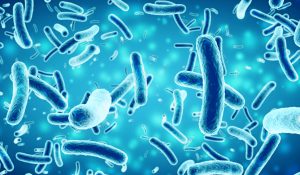
Mint, menthol, salicylic acid, selenium sulfide, and several of the other common ingredients in Nioxin products all work as mild anti-microbials, helping keep the bacteria and yeasts that like to live on your scalp in check.
Of course, if you suspect you have a true infection of the scalp you should see a doctor or dermatologist. But, yeast and bacteria can all contribute to hair loss by damaging your hair, causing inflammation, and even contributing to the buildup of harmful chemicals on and in your scalp.
Keeping the microbiome on your skin and scalp in balance, and in check, will help keep your hair happier and healthier.
Nioxin also includes another anti-microbial botanical, camellia sinensis, or tea plant extract. It’s also called tea tree extract. The extract is commonly used in both skin and hair care, but, again, can be irritating for anyone with sensitive skin.
Pros
We’ve talked about how the Nioxin line of products works, but it’s also important to look at the products as a complete package. They have several benefits over other hair loss products, and we’ll get to the main cons of using Nioxin shampoos in a moment.
One-Stop-Shop
One of the biggest advantages of Nioxin is that it’s a once stop shop for a complete line of hair care products. Especially if you decide to go with one of the hair treatment systems you have three products that are carefully designed to work together in one purchase.
The bottles all come with instructions, and once you’re in the Nioxin routine it’s easy to maintain.
If you decide you need to add other products, like a daily minoxidil treatment, hair masks, or styling aids, you can also get those products from Nioxin. Since they all come from the same manufacturer you can guarantee that they’re safe to use together and that one product won’t interfere with the benefits of another.
They Use a Combination of Traditional Beauty Products and Botanical Products
You probably noticed that we mentioned a lot of botanical extracts when we were covering how the line works. That’s because the botanicals are one of the big things that sets Nioxin apart.
They also include important vitamins like biotin, zinc, and folic acid for a holistic approach to hair and scalp care.
That said, aside from the botanicals and vitamins, Nioxin’s ingredient lists are usually standard ingredients for high-end beauty products. They aren’t chemical-free, but they do combine the best of the natural care and standard beauty product design.
Fast Acting
Many users report seeing results from the Nioxin shampoo hair care systems in as little as a couple of weeks. That’s a faster turnaround than most hair loss treatments, minoxidil, and finasteride both take 3-4 months to show results, and you won’t see full results for 6-12 months.
Now, you should still expect it to take at least 6 months to see full results from Nioxin. But, since Nioxin’s products use a scalp-up approach to hair care, while also improving the health of the hair strands and overall appearance of your hair.
Since Nioxin also offers styling products, you can take steps to disguise your thinning hair even if you aren’t one of the users that gets immediate results.
Cons
Unfortunately, some serious cons come along with trying Nioxin. Some of them are common to most hair loss treatments, others are particular to Nioxin’s line of hair care products.
Can Cause Some Hair Fall in the First Couple Weeks
Like most hair loss treatments, Nioxin’s products can make some of your hair fall out in the first 3-6 weeks you use the product.
The good news is that this hair is hair that would have eventually fallen out anyway, it’s not growth stage hair, and would have to fall out to make room for new hair.
Unfortunately, depending on the type and cause of your hair loss, this initial phase of hair loss can be significant. It can also be mild, so mild that many users don’t notice it at all. But, even if you do notice significant hair loss when you first switch to a Nioxin shampoo system, you should try to stick with them for at least 6 months.
If you’re concerned about hair loss after you start using a Nioxin product, you should consult with a dermatologist.
Can Cause Skin Irritation
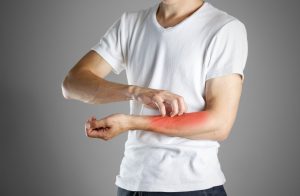
One of the downsides of these shampoos is that they can cause irritation for some users. Since there is stinging nettle included, you should be cautious and do a skin test before using their shampoos if you know you are sensitive to nettles, poison oak, or poison ivy.
Tea tree and mint extracts are also known to be irritating to some people, as are salicylic acid and sodium lauryl sulfate and sodium laureth sulfate.
Most Nioxin shampoos contain at least one of those ingredients, and many of them have all of them. While Nioxin can be a great help for some people with hair loss, it can also cause problems if you react to one of the extracts or other ingredients.
It Has Sodium Lauryl Sulfate
Sodium lauryl sulfate and sodium laureth sulfate are both common ingredients in shampoo. They help the formula lather well, creating those bubbles and foam that are so satisfying in the shower.
Unfortunately, despite being an incredibly common ingredient, they can also be irritating and dry your hair.
Some people develop a progressive allergy to one or both SLS chemicals. An allergic reaction is incredibly rare, but if you notice that your shampoo, facial cleanser, toothpaste, or other products make you itchy, check with a dermatologist to be sure you haven’t started to develop an SLS sensitivity.
Normally we recommend avoiding sulfates and parabens in hair loss shampoos. Nioxin also used to be formulated without sulfates, although more recent versions of their hair loss treatment systems have all included them.
The Formula Frequently Changes
Another common problem users have with Nioxin is that the formula, and which treatment system targets which combination of traits and symptoms, changes more often than most beauty products.
As a rule of thumb, you should use their consultation tool every couple of months to make sure the system product you’re ordering is still the right one for your hair.
Previous versions were sulfate-free, which more recent formulas are not, so you should also plan on reading the ingredient list every few months if you are allergic or sensitive to common hair and beauty product ingredients.
Conclusion
Nioxin’s shampoo systems, styling products, and additional treatment products are well formulated to create an ideal environment for your hair to grow. They take advantage of traditional shampoo formulations as well as botanical ingredients and address all the main causes of hair loss in one go.
However, their products can be irritating, and, aside from their minoxidil treatment, the shampoos and styling aids are not FDA approved as an effective hair loss treatment.
It’s also easy to get discouraged and give up on Nioxin’s treatment systems if they cause early hair fall, and important to stick with it unless you suspect a more serious reaction is responsible.
Overall, Nioxin is a great support for treating and reversing hair loss, though results vary widely between individuals.
